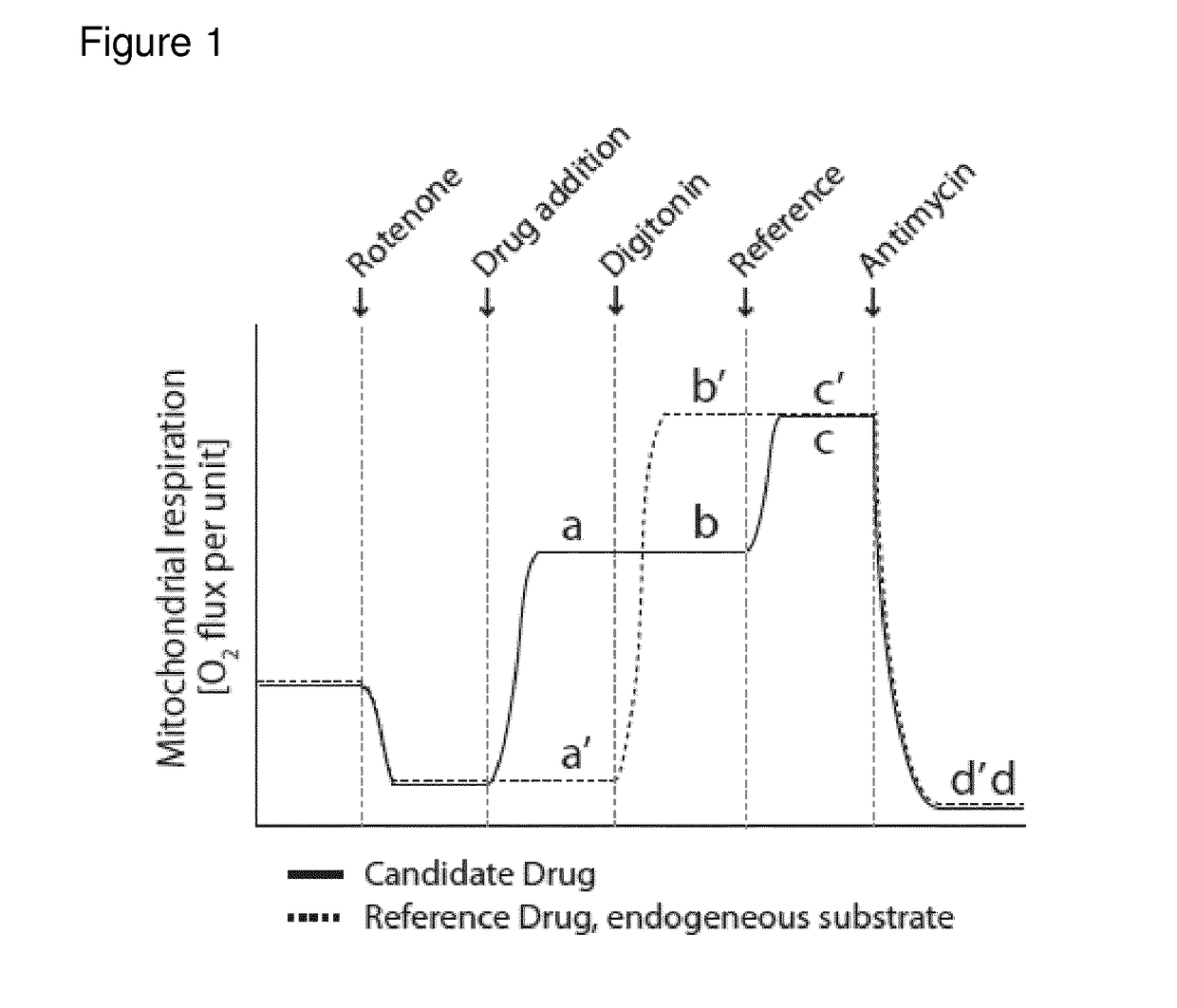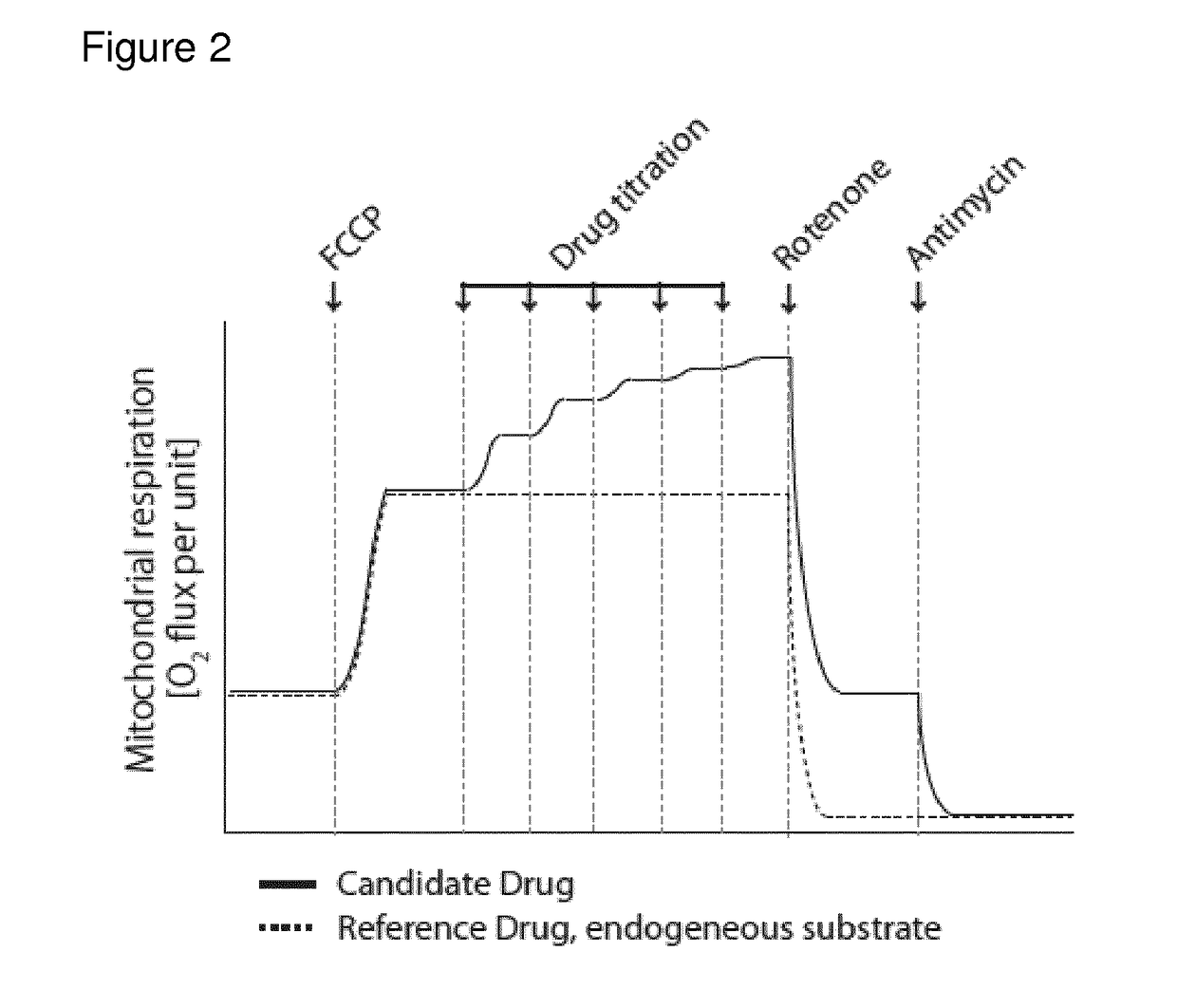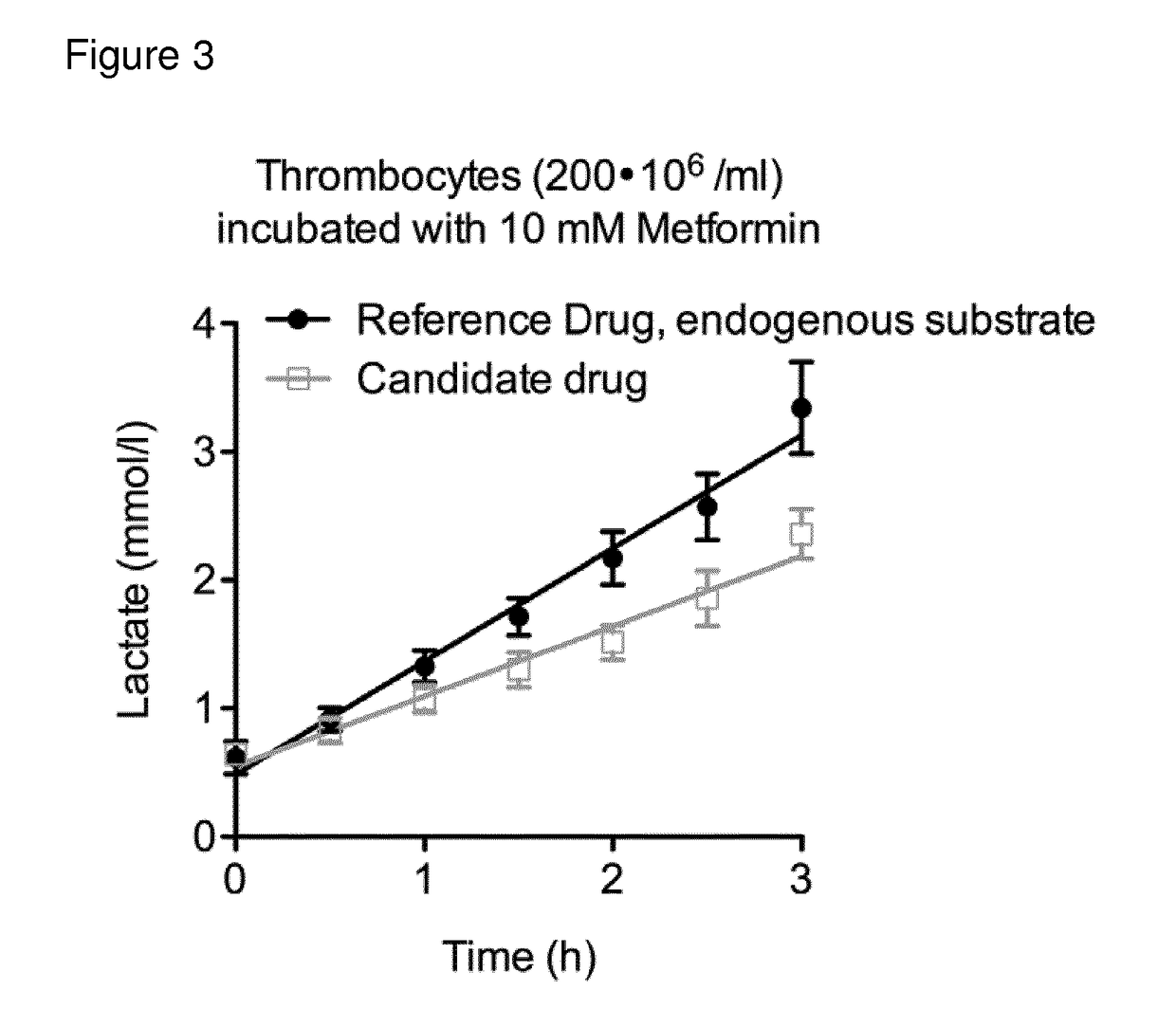Prodrugs of Succinic Acid for Increasing ATP Production
a technology of succinic acid and atp, which is applied in the direction of drug composition, metabolic disorder, cardiovascular disorder, etc., can solve the problem of no available treatment that can cure mitochondrial diseases
- Summary
- Abstract
- Description
- Claims
- Application Information
AI Technical Summary
Benefits of technology
Problems solved by technology
Method used
Image
Examples
example 1
of NV134 (01-134)
[0353]
[0354]A solution of 4-chlorobutan-1-ol (8.00 g, 73.7 mmol) and PCC (23.8 g, 110.5 mmol) in CH2Cl2 (200 mL) was stirred for 3 hours at room temperature. The mixture was then diluted with ether, filtered through a pad of celite and neutral alumina. The black gum was triturated in ether. The filtrate was concentrated to give 5.70 g of 4-chlorobutanal as pale yellow liquid which was used in next step without further purification.
[0355]To a mixture of ZnCl2 (120 mg, 0.9 mmol) and acetyl chloride (3.50 g, 44.1 mmol) at −5° C. under nitrogen was added dropwise a solution of 4-chlorobutanal (4.70 g, 44.1 mmol) in CH2Cl2 (7 mL). The mixture was stirred at −5° C. for 1 hour and then at room temperature for 1 hour. The mixture was diluted with water and extracted with CH2Cl2 twice. The combined CH2Cl2 extracts were washed with water, dried (Na2SO4) and concentrated to yield 1,4-dichlorobutyl acetate as yellow oil which was used for next step without further purification....
example 2
of 4-(1-acetoxy-4-(1,3-dioxoisoindolin-2-yl)butoxy)-4-oxobutanoic acid (NV150, 01-150)
[0358]
[0359]To a mixture of ZnCl2 (26.0 mg, 0.190 mmol) and acetyl bromide (1.15 g, 9.40 mmol) at −5° C. under nitrogen, was added dropwise a solution of 4-chlorobutanal (1.0 g, 9.4 mmol) in CH2Cl2 (1.5 mL). The mixture was stirred at −5° C. for 1 hour and then at room temperature for 1 hour. The mixture was diluted with water and extracted with CH2Cl2 twice. The combined CH2Cl2 extracts were washed with water, dried (Na2SO4) and concentrated under reduced pressure to yield 1-bromo-4-chlorobutyl acetate as yellow oil, which was used for next step without further purification.
[0360]To a solution of 1-bromo-4-chlorobutyl acetate (1.3 g, 5.6 mmol) and succinic acid monobenzyl ester (1.1 g, 5.1 mmol) in CH3CN (15 mL) was added K2CO3 (0.85 g, 6.1 mmol). The mixture was stirred at room temperature overnight. The mixture was diluted with water and extracted with EtOAc twice. The combined organic extracts ...
example 3
Results of Biological Experiments
[0363]The compounds given in the following table were subject to the assays (1)-(4) mentioned under the heading I. Assay for evaluating enhancement and inhibition of mitochondrial energy producing function in intact cells. In the following table the results are shown, which indicate that all compounds tested have suitable properties. Importantly, all compounds show specific effect on CII-linked respiration as seen from screening protocols 1 and 4, as well as a convergent effect, with CI-substrates available, as seen in assay 2.
Results from Screening Protocols 1-4
[0364]The compounds are numbered as per Examples 1 to 2
Con-CompoundConvergentvergentCIIUncou-NV(Routine)(FCCP)(plasma)CIIplingToxicity01-150++++(+)++(+) 2 mM01-134++(+)(+)(+)(+)10 mM
[0365]Legend: Convergent (Routine)—the increase in mitochondrial oxygen consumption induced by the compound under conditions described in screening assay 3; Convergent (FCCP)—the increase in mitochondrial oxygen c...
PUM
| Property | Measurement | Unit |
|---|---|---|
| temperature | aaaaa | aaaaa |
| temperature | aaaaa | aaaaa |
| time | aaaaa | aaaaa |
Abstract
Description
Claims
Application Information
 Login to View More
Login to View More - R&D
- Intellectual Property
- Life Sciences
- Materials
- Tech Scout
- Unparalleled Data Quality
- Higher Quality Content
- 60% Fewer Hallucinations
Browse by: Latest US Patents, China's latest patents, Technical Efficacy Thesaurus, Application Domain, Technology Topic, Popular Technical Reports.
© 2025 PatSnap. All rights reserved.Legal|Privacy policy|Modern Slavery Act Transparency Statement|Sitemap|About US| Contact US: help@patsnap.com



